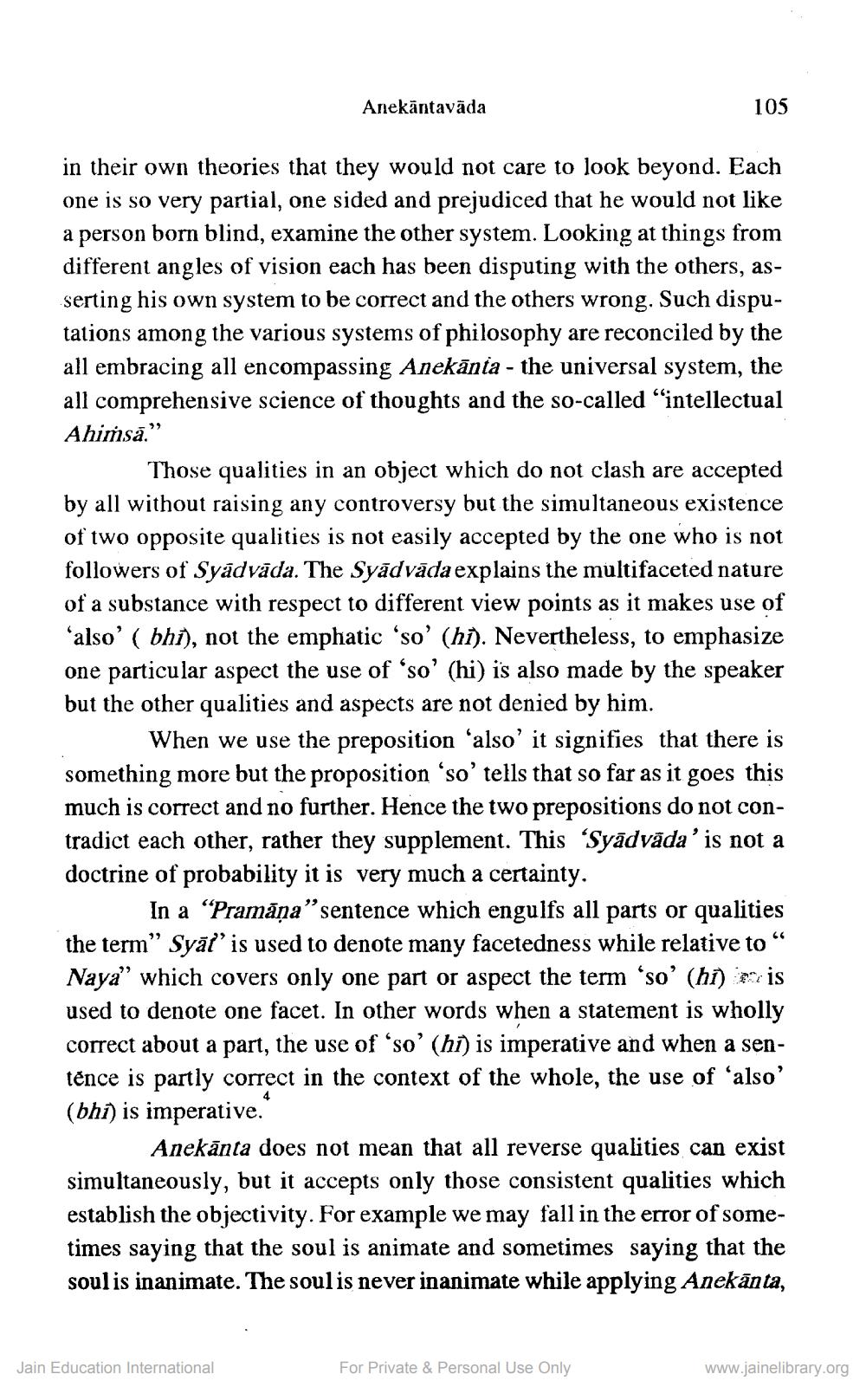________________
Anekantavāda
105
in their own theories that they would not care to look beyond. Each one is so very partial, one sided and prejudiced that he would not like a person born blind, examine the other system. Looking at things from different angles of vision each has been disputing with the others, asserting his own system to be correct and the others wrong. Such disputations among the various systems of philosophy are reconciled by the all embracing all encompassing Anekānta - the universal system, the all comprehensive science of thoughts and the so-called “intellectual Ahiṁsā."
Those qualities in an object which do not clash are accepted by all without raising any controversy but the simultaneous existence of two opposite qualities is not easily accepted by the one who is not followers of Syādvāda. The Syādvāda explains the multifaceted nature of a substance with respect to different view points as it makes use of ‘also' ( bhi), not the emphatic ‘so' (hi). Nevertheless, to emphasize one particular aspect the use of 'so' (hi) is also made by the speaker but the other qualities and aspects are not denied by him.
When we use the preposition ‘also' it signifies that there is something more but the proposition ‘so' tells that so far as it goes this much is correct and no further. Hence the two prepositions do not contradict each other, rather they supplement. This 'Syādvāda' is not a doctrine of probability it is very much a certainty.
In a "Pramāna" sentence which engulfs all parts or qualities the term” Syāl is used to denote many facetedness while relative to“ Naya” which covers only one part or aspect the term 'so' (hi) poris used to denote one facet. In other words when a statement is wholly correct about a part, the use of 'so' (hi) is imperative and when a sentênce is partly correct in the context of the whole, the use of ‘also' (bhi) is imperative.
Anekānta does not mean that all reverse qualities can exist simultaneously, but it accepts only those consistent qualities which establish the objectivity. For example we may fall in the error of sometimes saying that the soul is animate and sometimes saying that the soul is inanimate. The soul is never inanimate while applying Anekānta,
Jain Education International
For Private & Personal Use Only
www.jainelibrary.org




